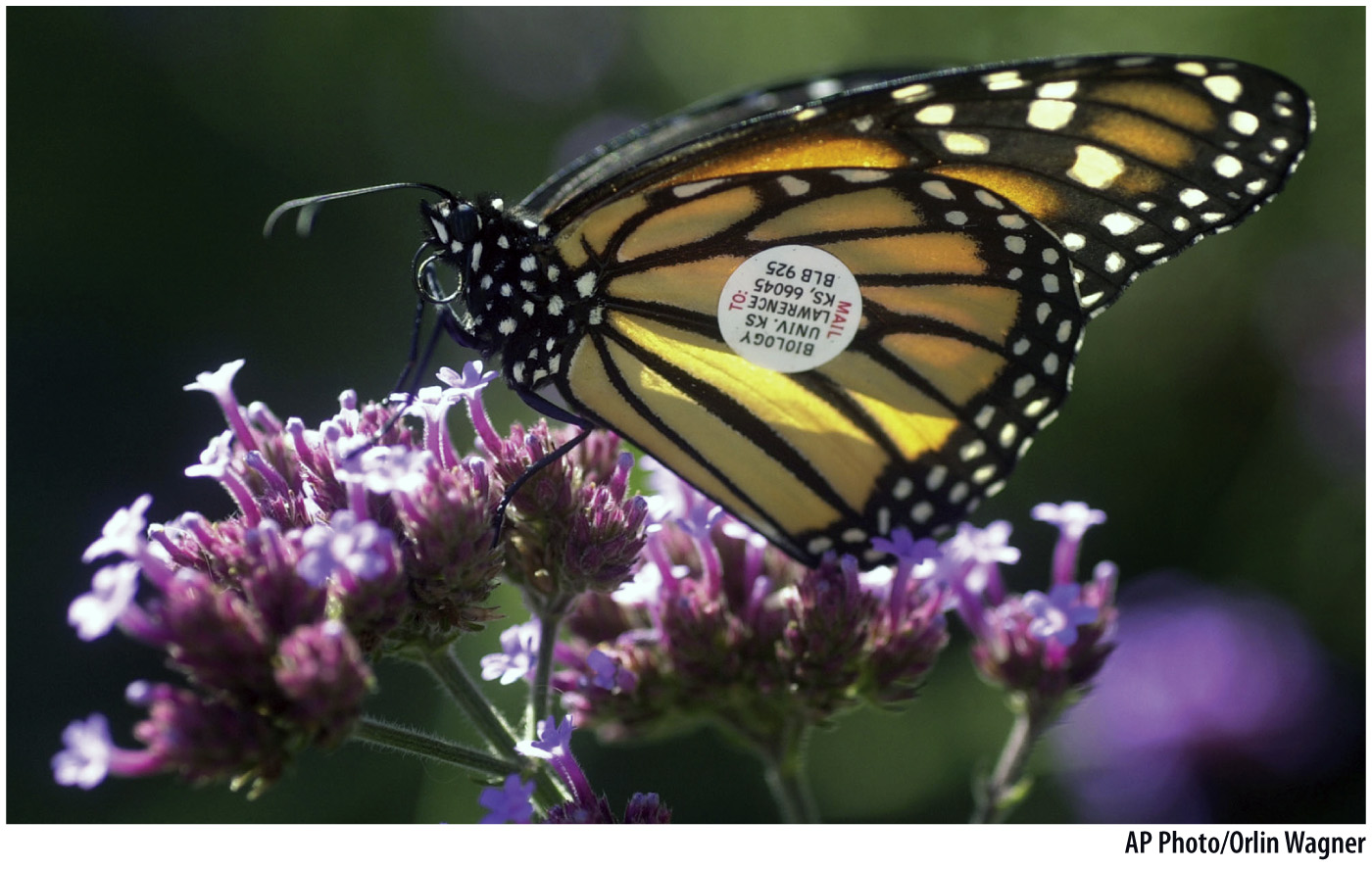HOW DO WE KNOW?
FIG. 46.3
How many butterflies are there in a given population?
BACKGROUND Individuals in many populations of butterflies (and other animals) most often live and die within the patch of habitat where they were born. Population sizes of such animals can be estimated by a technique called mark-
METHOD Butterflies, such as the Monarch, are captured in an area, marked with an identification sticker on the wing as shown here, and then released. The number of marked butterflies is recorded. The next day, butterflies are caught and the number of marked and unmarked butterflies is recorded. Butterflies with marks are the recaptures.
To find the population size (N), we take the total number of marked butterflies and unmarked butterflies caught on the second day (C) and divide by the number of recaptures (R). We multiply this number by the number of butterflies marked on the first day (M), as follows:
N = (C/R) × M
RESULTS Let’s say we capture 100 butterflies on the first day, mark them, and release them. On the second day, we capture 120 butterflies, 30 of which are marked and the rest unmarked. We conclude that the population size is (120/30) × 100, or 400 butterflies total in the population sampled.

RELATED METHODS Mark-
SOURCE Lincoln, F. C. 1930. “Calculating Waterfowl Abundance on the Basis of Banding Returns.” Cir. U.S. Department of Agriculture 118:1–